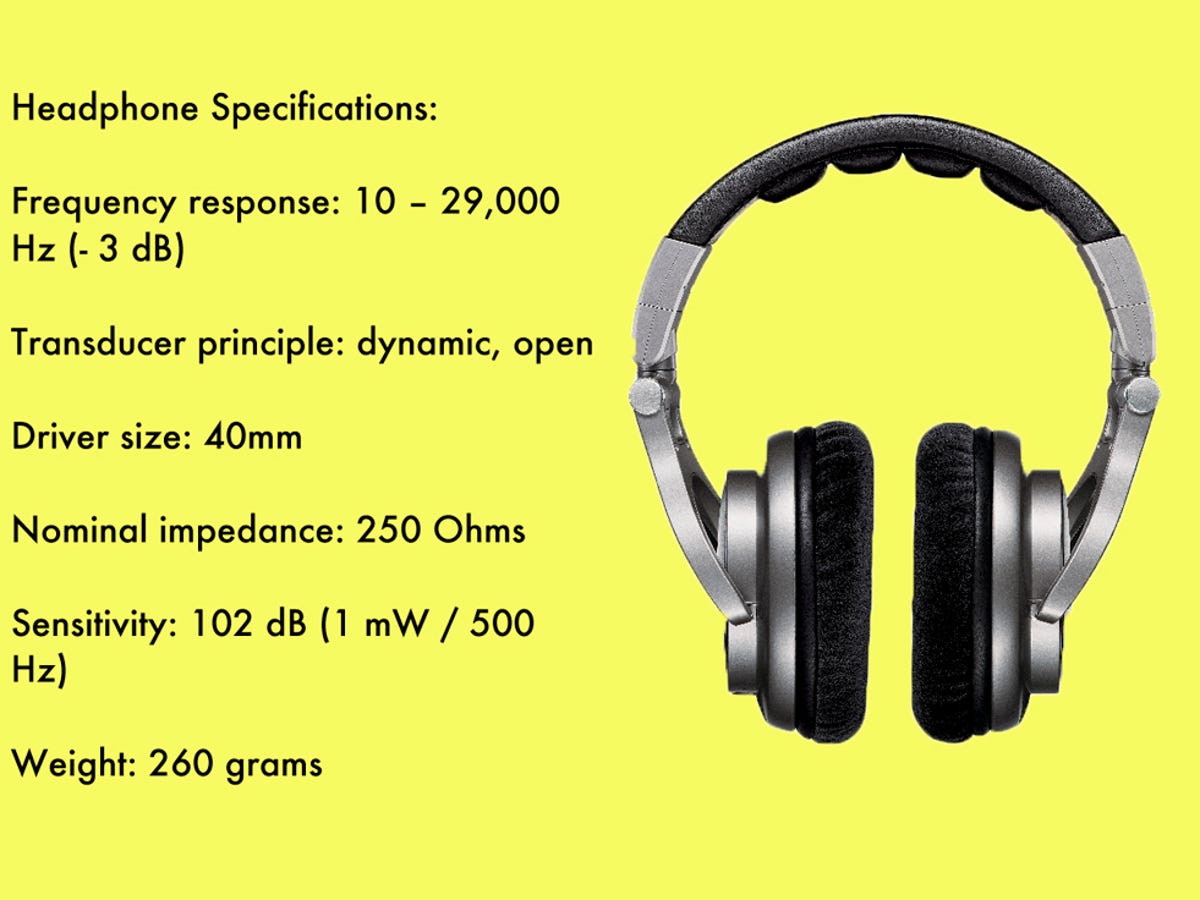The Sound Savvy's Guide: What is Headphone Impedance?
Introduction
Whether you're an avid audiophile or simply the casual listener, understanding headphone specifications can seem a tad overwhelming. Among these specifications, 'headphone impedance' often pops up, raising questions like, what does it mean and how does it affect our listening experience? In this guide, we delve into the nitty-gritty of headphone impedance, shedding light on its impact on sound quality, differences between high and low impedance headphones, and crucial tips on selecting headphones based on their impedance.
Decoding Headphone Impedance: An Overview
At the heart of any pair of headphones are essential specifications that distinctively define their performance, one of such being 'headphone impedance.' To comprehend the intricacies of headphone impedance, imagine it as a gatekeeper that regulates audio signals.
- Central Fact: Measured in Ohms (Ω), 'impedance' represents how a headphone fights against the electric current flowing through it.
- Primary Role: Essentially, headphone impedance is intertwined extensively with the headphone's efficiency and sound quality while determining compatibility with various audio devices.
- The Ohms Range: It’s commonplace to find headphones with impedance as low as 16 Ω for casual use and as high as 300 Ω primed for professional audio setups.
- Headphone Match: Understanding headphone impedance can help ascertain the level of harmony between your headphones and audio device, ensuring you enjoy the rich sweetness of sound just as it's meant to be.
- Balanced Harmony: In essence, striking the optimal balance between your audio source and headphone impedance guarantees a sublime aural experience.
What Does Headphone Impedance Mean?
When it comes to headphones, "impedance" performs as a key player dictating the headphone's resistance level to the electric flow or audio signal from the source device. But unless you're submerged in the audio world, these terminologies and their implications might seem a bit off the beaten path. To break it down, let’s take a detailed look at what headphone impedance implies:
• High-Impedance Headphones: Headphones exhibiting high impedance levels are notorious for demanding more power to deliver high-quality sound. To give you a better perspective, high-impedance headphones usually have an impedance of over 50 ohms. You'll often spot these audio giants in professional settings like recording studios, where robust audio equipment with more significant power outputs is staple.

• Low-Impedance Headphones: On the flip side, low-impedance headphones, generally falling below 25 ohms, don’t ask much from your devices in terms of power. As a result, they are ideal companions for your conventional devices with lower power output like smartphones and portable music players.
How do these contrasting power requirements impact you as a user? The scenario pans out like this:
• Compatibility: Low-impedance headphones often align with everyday, easy-to-access devices. High-impedance headphones, however, require more substantial sound equipment to unleash their full audio potential.
• Listening Experience: When both headphones meet their power companions, high-impedance headphones tend to perform better with superior sound quality. Low impedance pairs, due to their less demanding nature, might sometimes encounter sound distortion if the device pumps more power than required.
Understanding impedance is essentially like solving a puzzle piece that can significantly accentuate your audio experience. Matching your headphones impedance with the device is the first step into diving into a world of rich, flawless sound quality.
How Does Impedance Impact the Quality of Sound?
When it comes to understanding how impedance influences the quality of sound generated by headphones, it's essential to comprehend that the impact is multi-dimensional. This might seem intricate, but to simplify, we'll examine the role of impedance on sound quality under several key aspects:
Impedance and Noise: High impedance headphones often exhibit excellent noise reduction capabilities. This capability is due to their greater resistance to the electrical signal, which minimizes unwanted noise and facilitates cleaner, clearer sound. This is especially beneficial in professional or studio settings where superior sound clarity is paramount.
Power Requirement and Distortion: High impedance headphones require greater power to function efficiently. This means they're less susceptible to sound distortion, owing to controlled power flow. Conversely, low-impedance headphones are much easier to drive. However, they run the risk of suffering from audio distortion due to the potential of unregulated power flow, especially when connected to devices capable of high-power output.
Device Compatibility: Impedance significantly informs the compatibility of headphones with different devices. Lower impedance headphones, generally below 25 ohms, are ideal for battery-operated devices like smartphones or portable music players due to their lower power requirements. On the contrary, high impedance headphones, typically above 50 ohms, demand robust audio devices or amplifiers due to their greater power needs.
Sound Quality: High-impedance headphones are widely acknowledged for their superior sound quality, providing more accurate sound reproduction and richer bass response. However, to truly reap the benefits and achieve optimal performance, they need to be paired with suitable, high-powered equipment.
In summary, the headphone impedance profoundly impacts the sound quality by influencing factors such as noise reduction, power requirements and potential distortion, device compatibility, and overall sound quality. Recognizing this can allow users to select a pair of headphones that best matches their needs, resulting in an enhanced audio experience.
High Impedance Vs. Low Impedance Headphones: Is There a Difference?
High and low impedance headphones exhibit stark differences concerning usability, sound quality, device compatibility, and power requirements. Here's a detailed comparison between these two categories of headphones:
I. High-Impedance Headphones:
- Commonly Above 50 Ohms: High-impedance headphones typically have an impedance greater than 50 ohms. This higher resistance leads to specific benefits and drawbacks.
- Superior Audio Quality: These headphones offer superior sound quality, with less distortion and noise, and enhanced features like deeper bass response.
- Requires Dedicated Audio Equipment: Their high resistance means they need high-power audio sources to function optimally - think DJ equipment, studio gear, or high-end amplifiers.
- Enhanced Durability: High-impedance headphones are designed for heavy-duty and professional usage, and therefore, tend to exhibit higher durability.
II. Low-Impedance Headphones:
- Usually Below 25 Ohms: The impedance level of these headphones typically falls below 25 ohms, proving advantageous in certain situations.
- Designed for Convenience: Low-impedance headphones are intended for easy use, ideal for consumers who primarily use smartphones, MP3 players, or similarly low-power sources for audio playback.
- Potential Distortion: While convenient, the reduced power requirements might lead to occasional distortion in sound quality when the power output uncontrollably fluctuates.
- Ideal for Portable Devices: Due their compatibility with low-power sources, these are a perfect choice for on-the-go music enthusiasts.
Understanding these differences can guide you in making an informed decision based on your specific audio requirements and the nature of your devices. Both types come with their distinct advantages. Therefore, the impedance factor boils down to what fits your needs perfectly.
How to Choose Headphones Based on Impedance?
Choosing headphones according to their impedance can feel like a complex task but, with the right understanding of your audio needs and equipment, it can become a straightforward one. Here are key considerations to guide you:
- Identify Your Audio Sources: Evaluate the devices you’ll be pairing with your headphones. For low-power output devices like smartphones and portable music players, go for low-impedance headphones.
- Understand Your Listening Needs: If you require headphones primarily for casual, everyday use, low-impedance models would serve you well. If you're looking for superior sound, more professional audio quality, and don’t mind investing in a high-power source (like an amplifier), high-impedance headphones would be the better bet.
- Match Impedance: For optimized sound performance, ensure the impedance of your headphones matches your audio device’s output impedance.
In summary:
- Low-impedance headphones (<25 ohms): Ideal for everyday, casual use and compatible with low power sources like smartphones. Easy to drive but can sometimes result in sound distortion.
- High-impedance headphones (>50 ohms): Offers superior sound quality and high durability. Suited for professional use with robust audio equipment. Requires high power input but offers cleaner playback.

By considering these aspects, you can seamlessly tailor your headphone selection according to impedance to better serve your audio experience.
Conclusion
Understanding headphone impedance is crucial in making informed decisions when investing in a good pair of headphones. Whether you prefer the portable convenience of low-impedance headphones or the superior sound quality of high-impedance ones, it all boils down to your specific audio needs and the source device. Strike a balance between these two elements, and you're set for an enticing aural adventure.
Related FAQs about what is headphone impedance
What is the ideal headphone impedance for a smartphone or portable player?
Generally, low-impedance headphones, which typically fall below 25 ohms, are ideal for smartphones or portable players. These devices cannot deliver the high power output required by high-impedance headphones, making them better suited to low-impedance models to ensure adequate volume and prevent potential sound distortions.
Why do professional audio devices usually require high impedance headphones?
Professional audio devices often require high impedance headphones due to their enhanced power output capabilities. High impedance headphones typically offer superior sound quality, higher durability, and are less susceptible to sound distortion. Thus, they are preferable for professional applications where sound quality and durability are paramount.
Can mismatched headphone and audio source impedance affect my listening experience?
Yes, mismatched headphone and audio source impedance can affect your listening experience. If a device outputs more power than a low-impedance headphone can handle, it may lead to sound distortion. Conversely, high-impedance headphones might lack adequate volume if paired with low-power output devices.







